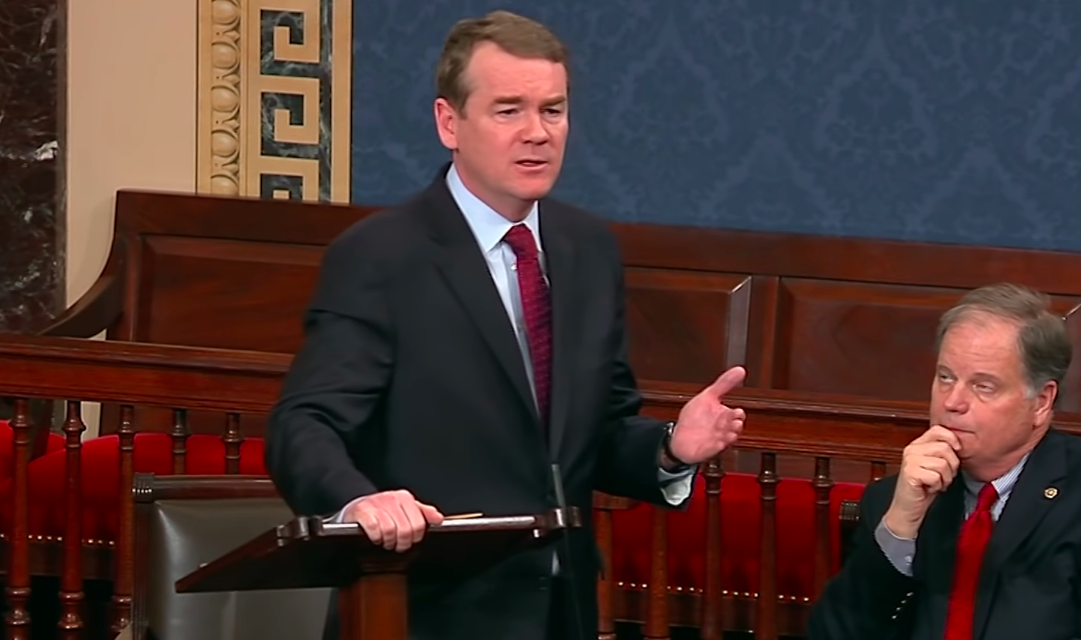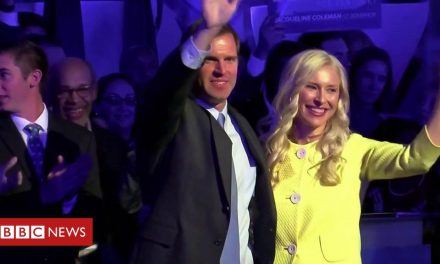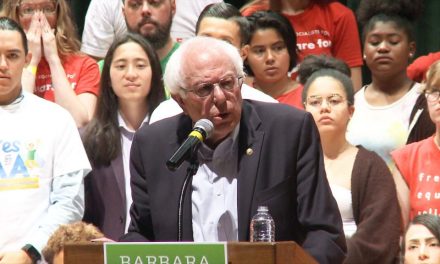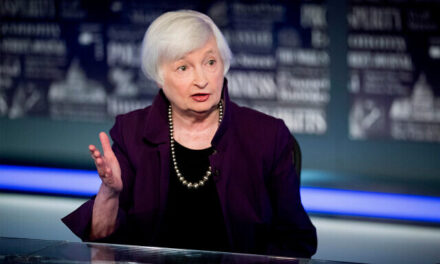Image Credits: CNN/YouTube Screen Capture.
Senator Michael Bennet of Colorado just became the twenty-first Democrat to formally announce a candidacy for the Democratic Party’s presidential nomination. It’s not clear why he waited so long to take the plunge or why he thinks he has a chance of being the victor. The huge number of candidates is testing my bandwidth as an analyst. It’s just not possible to keep track of that many people and really have any feel for their activities, the nuances of their positions, and their overall strategies. Where are they campaigning, what are they saying, who is endorsing them, how much money are they raising, what kind of staff do they have, what kind of ground game have they built? It’s too much.
In Bennet’s case, he’s not even the best-known candidate in his own state. That designation goes to former Colorado governor John Hickenlooper. Bennet is certainly not the best known senator in the race, either. Six of his Democratic colleagues are already running, and I think it’s safe to say that all of them are better known nationally than Bennet.
There are now so many people in the contest that it’s creating a real challenge for the debates. The Democrats have already split the first scheduled debate into a two-day affair that will include a maximum of ten participants for each night. So far, seventeen candidates have met the entry requirements. It’s now inevitable that at least one of the declared candidates will be left out.
The first Democratic presidential debate showcases that effort: Candidates can gain access to the stage through grass-roots fund-raising, and in anticipation of a “historically large primary field,” officials decided to split the event across two nights in late June, so that as many as 20 candidates could take part.
But as of Thursday morning, when Senator Michael Bennet of Colorado announced his candidacy for president, those efforts at inclusion have been placed under strain. Mr. Bennet’s entrance ticks the number of Democratic candidates in the field up to 21, and additional candidates may still join, making it a real possibility that some will be left off the debate stage.
Only 17 candidates have so far qualified for the first debate, so cuts are not guaranteed. But with nearly two months to go, more candidates could very well meet the requirements.
Whether everyone gets to participate or not, you cannot have a decent debate with ten people on the stage. Even at a lower number, it becomes little more than a contest to produce the best material for a viral Instagram meme. An engaged Democratic voter is now expected to spend four-to-six hours over two nights watching candidates engage in a social media traffic contest. I follow politics for a living by choice, and that sounds like torture to me.
It’s also difficult to see how there’s any necessary connection between who does well in that kind of game and who would be a good president. I’ve long felt this way about the debate formats, but this upcoming cycle should really prove my point.
I don’t intend to be dismissive of Senator Bennet. I really enjoyed the epic rant he delivered about Ted Cruz on the Senate floor.
Bennet is a smart and serious guy and he has some political talent. His ideological profile and voting record are a little too centrist for my tastes, but I have no doubt that he’d be a responsible and trustworthy president. It’s not his fault that everyone and their cousin has already announced that they want to challenge Donald Trump in 2020.
But I still have trouble convincing myself that I should care enough about his candidacy to follow and write about it. It’s probably a sign of the times that it was the viral video of his Ted Cruz rant that propelled him into this race. And maybe that’s the reason we should pay attention to him. If producing viral videos is the key to winning in modern American politics, Bennet has to be considered a serious contender.






